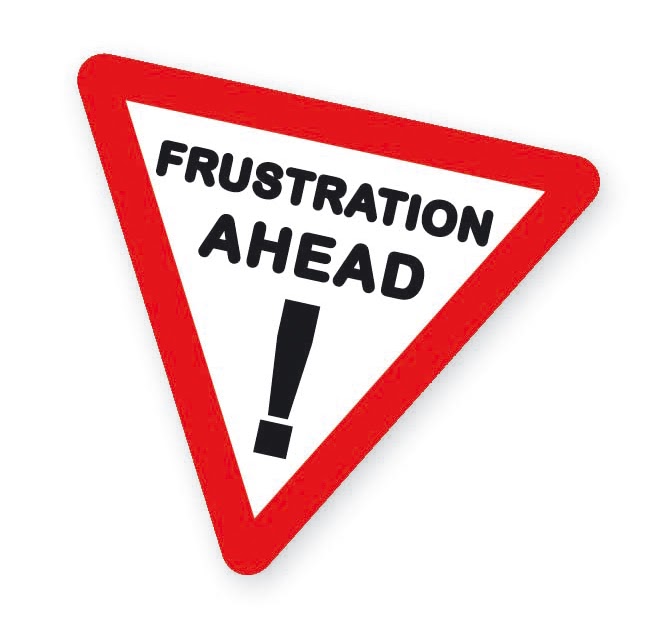Common Obstacles in Learning Mindfulness

Overview
Regular practice of Mindfulness skills can lead to more self-awareness and less ‘reactivity’. Mindful awareness will improve your ability to self-regulate which will give you more choice over how you respond when faced with difficult situations. However, when beginning to learn Mindfulness there are some obstacles people commonly encounter. With some understanding and planning, you can reduce the potential frustrations you may experience. This page will address the common obstacles so that you persist and go on to reap the full benefits of continued practice. (To learn more about what Mindfulness is, click here).
Common Questions
Do I need to Meditate? No – you do not need to Meditate to practice Mindfulness! You can practice being mindful with your eyes closed or open – eyes open is (after all) the ultimate goal, isn’t it?
Although mediation is very helpful, most people do not have the time nor the commitment to start meditating – and even if you are someone who does meditate, you STILL need to practice being Mindful with your eyes open… (!).
Eyes closed (i.e., ‘formal’ practices) simply help you focus in on what it is that you need to be doing. But the most important part of any Mindfulness practice is to be able to do it in real-time with your eyes open so you can live your life more freely with less reactivity.
Do I need to be ‘Buddhist’ or ‘Spiritual’? No – you do not need to take up any kind of spiritual path in order to increase your Mindful awareness.
Remember: All Mindfulness means is being aware of things as they are happening without judgement. The purpose of developing the skill of being mindful is to increase your ability to notice your thoughts, your emotions, and your physical sensations, so that YOU can decide how you want to react (vs being unaware of how your mind and body are influencing you and then being at the mercy of whatever your mind / body are reacting to!).
Common Obstacles
“ I keep having thoughts ! ”
The most common misunderstanding about practising Mindfulness is that you must stop having thoughts. But if you’ve ever tried a Mindfulness exercise, you will quickly notice that this is completely impossible!
If you are struggling with trying to ‘stop’ your mind having thoughts – this suggests to you do not fully understand the purpose Mindfulness. So – here is some helpful info:…
Mindfulness of thoughts means being aware of your mind having a thought, rather than you responding to the thought. Thoughts are not commandments – they are simply mental events related to having a mind (just like blinking is a physical event related to having eyes). In the same way as you can notice the blinking that your eyes are doing – you can notice the thoughts that your mind is doing. You are not your mind and its thoughts, anymore than you are your eyes or the ‘blinks’ that your eyelids are doing.
This is very different to trying to ‘stop’ your thoughts, or telling yourself that you ‘don’t care’ or that ‘it does not matter’ what you are thinking. After all, we have over 60,000 thoughts per day – and just like you cannot stop your eye’s blinking (that’s just what eyelids do), you cannot stop your mind from thinking (that’s just what the mind does). Remember – The goal of Mindfulness is to learn to notice (vs react) to the movement in the mind – being aware of your mind having a thought rather than responding to the thought.
Although many people report a slowing of thoughts (which is pleasant when it occasionally happens), having zero thoughts during Mindfulness practice actually wouldn’t teach us anything! So it’s GREAT that you are noticing your mind’s thoughts – next step is to return to what you were doing within your Mindfulness exercise. Doing this, is like doing a ‘mindfulness push-up’!
It might be useful to imaging that your thoughts / feelings are like clouds passing in the sky (or that your thoughts / feelings are like waves on the surface of the ocean) – Mindfulness allows you to notice and have the thoughts / feelings without getting caught up in trying to change them. On the other hand, trying to ‘not’ have thoughts is about as helpful (or likely) as trying to stop bad weather!
So, when our thoughts, emotions, or physical sensations take us away from our breath (or whatever our chosen focus is within our mindfulness practice), this provides us with an opportunity to either react (which is what you normally do), or to notice and observe (if you can do this, then your skill level will become upgraded !). Each time we notice and bring our attention back to what we were doing this is like a “Mindfulness Push-Up”. With repeated practice, noticing and observing our wandering minds (vs reacting) gives us greater control over our attention and our reactivity. This is called ‘self-regulation’.
Tip: Sometimes an important idea may arise during a mindfulness practice that you may actually want to pay attention to and remember. However, trying to keep an idea in your mind can defeat the purpose of your practice. If this happens, simply write it down and return to your practice. Keeping a notepad and pen handy can reduce this disruption so you can get the most out of your practice.
” I Can’t Relax “
This is a common misunderstanding because (thankfully) you do not need to feel a certain way (e.g., calm, relaxed, or peaceful) in order to be Mindful! Although it is ‘nice’ to feel calm and relaxed – and quite often people do report that practicing mindfulness skills makes them feel calm and refreshed – this is NOT actually the point of doing Mindfulness!
The point of Mindfulness is not to achieve ‘a peaceful blissful state’. Rather, the point is to be open to whatever is happening. This means understanding that if you are stressed (for example), doing mindfulness may actually make you more aware of just how stressed you are, including how that stress might be affecting you. For instance, you may deliberately choose to focus on where you feel stress in your body; you may choose to notice what your mind is ‘telling you’ about the stress (or the feelings of stress in your body); you might attend mindfully to different emotions that are arising in response to stress; or, you might choose to notice and observe the physical urges you have to ‘act’ on these thoughts / feelings, etc…
By being willing to ‘be with’ your experience rather than struggling with it and trying to push it away, Mindfulness often has a paradoxical calming effect because by letting go of the struggle to change your experience, accepting things as they are requires far less effort. This can be experienced as ‘relief’ or ‘calm’.
However, ‘calm’ or ‘peace’ is not the goal – awareness is…! This is a tricky concept at first, because being calm feels good. And often, being mindful helps you to feel calm. However, the goal of mindfulness is awareness – if you are stressed, we want to stay with that and be aware of exactly what that feels like. Paradoxically, this often will lead to calm, but ‘calm’ cannot be the goal.
Why? If you approach mindfulness with the expectation or goal of a certain emotion, it will likely backfire because what you are ultimately doing is telling yourself that whatever state you are in is ‘unacceptable’. That is, the function of your behaviour in practicing Mindfulness is to avoid, push away, or get rid of a certain emotion. Understand that avoidance is the opposite of being open to what is, and represents a struggle with accepting things as they are. Struggling is resistance and this is the opposite of Mindfulness. Remember: Suffering = Pain x Resistance. (This concept is discussed in more detail on this page.)
” I Don’t Have Time to Meditate “
Most people try to start expecting they need to do too much. Even 20 minutes can seem like a long time! Remember, the quality of how you are practicing – how focused you are – is more important than the amount of time that you are practicing (quality over quantity!).
A Mindfulness practice need not take long – Even 3-5 minutes a day (or spread across the day) can make a noticeable difference over the space of just a week! You can always increase this as you get more familiar with the process. It is also easier (and better) to practice briefly, several times a day, than to cram it all into one session and forget about being mindful until the next day (another common mistake people make with their practice).
As discussed in the previous section, there are ‘formal’ (eyes closed) and ‘informal’ (eyes open) ways to develop and practice your Mindfulness skills. The ultimate goal is to be able to be mindful with your eyes open, so you can use it in practical ways in your life. You can do this effortlessly (eyes open) by checking in with your 5 senses for a few seconds at various points throughout the day.
Here are some suggestions to get you started:
- ‘What are 3 things I can smell right now?’ or
- ‘What can I hear inside vs outside of this room?’ or
- ‘What can I feel in my body right now?’ or
- ‘Can I notice all the points of contact between my body and the chair?” or
- “Can I notice the feeling of my feet on the floor?’
” I Can’t Remember to Practice “
One of the most common obstacles is simply not remembering to practice. It can be helpful to pre-plan a set time every day to practice, so that it becomes part of your routine. The best time to practice is the morning time, or early in the day when you are most alert. This will set you up for the rest of the day in terms of orienting your mind to ‘what mindfulness is’, which gives you something that you can return to rapidly later in the day.
As mentioned above, you can practice Mindfulness with your eyes open – this means you can take it anywhere! Work on setting yourself a prompt, or making it part of what you’re doing. E.g. While waiting at the traffic lights – “Can I notice three things I can smell?”, or contact between your feet and the floor, or the sun on your skin, or the sounds inside and outside of the car.
Some people like to set ‘mindfulness reminder’ alarms to prompt them to ‘check-in’ on a specific sense and ‘notice mindfully’ – there are smartphone apps (with mindfulness prompts) that can do this for you. For an introduction to mindfulness meditation that you can practice on your own, download the FREE UCLA Mindful App (iTunes / Google Play). On the other hand, an example of a highly-rated paid app (with a monthly fee) is Headspace which is available on iTunes and the Google Play Store. I have also prepared a comprehensive list of guided Mindfulness audio exercises, chosen for their high quality.
Acceptance vs ‘Wallowing’
Mindfulness requires being aware of things as they are – without judgement. This means accepting things as they are, without resistance. However, many people misunderstand this to mean that ‘acceptance means giving up or wallowing’. This is completely incorrect – Acceptance does not mean you like or want for things to be the way they are, it simply means that you are being honest and aware that things are the way they are, which means understanding that you might as well accept them instead of resisting what is.
Wallowing is not accepting – wallowing is a reaction driven by resistance that has a deep frustration/problem with how things really are. This this often leads to avoidance and destructive behaviours that generally make the situation worse either for one’s self or for others (aka ‘Suffering’).
Wallowing is tricky, because although someone wallowing may scream ‘I don’t care!’ what is really going on is extreme frustration because the person does actually care, else they would not be reacting in the extreme ways that they are. Wallowing causes suffering because whenever we resist our experience, we increase our suffering. Remember: Suffering = Pain x Resistance.
If you’re stuck in a pattern of wallowing, several skills in addition to Mindfulness are required, such as self-compassion, understanding your brain’s 3 emotion regulation systems, being able to regulate your physiology and to respond to what your mind is doing. There are free self-help resources to help you address the above, and I recommend working with a Clinical Psychologist who can teach you skills that will help enable you to respond to your situation more skilfully.
Summary
- Learning mindfulness is an important skill that will increase our awareness and your ability to choose what you focus on vs being ‘pushed around’ by your mind or your emotions. It is the first step towards emotion regulation.
- An increase in awareness is also essential if we truly want to make any meaningful change. If we cannot be fully aware of our thought patterns, our emotional experience, our behavioural reactions, and their complex interaction – then what hope have we got of changing them? In other words, without awareness, there can be no change.
- Although learning mindfulness can seem frustrating at first, it can help to understand the above concepts and to utilize their corresponding strategies.
- It can also help to have a teacher or a guide. You can learn mindfulness by joining a mindfulness group in your community (eg, meetups), or to take a mindfulness course where you can ask questions and learn from others.
- You can learn mindfulness with the assistance of guided mindfulness audio exercises.
- It can help to have the input of a clinical psychologist who can help teach you mindfulness skills in a supervised and gradual way that is engaging and is tailored to your specific situation.
A Word of Caution
For certain people such as those with high levels of anxiety, shame or self-criticism, or for people with histories of unresolved trauma, unsupervised Mindfulness is known to trigger adverse events, such as negative emotions, flashbacks, perceptual disturbances, and ‘relaxation-induced panic’. This is because Mindfulness is about becoming more aware of what our minds and bodies are doing, which may expose us to things that we have previously been avoiding.
As always, if you are struggling with high levels of self-criticism or anxiety or if you have a history of trauma, it is recommended that you seek the professional help of a Clinical Psychologist. Because these sorts of issues rarely ever resolve by themselves.
Further Resources
- Learn more about Mindfulness is and why it is NOT enough
- Guided Mindfulness audio exercises
- Learn how to deal with negative thinking
- Your Brain’s Threat System
- Dealing with your Inner Critic
- The Physiology of Self-Criticism
- Fears, Blocks, & Resistances to Self-Compassion




